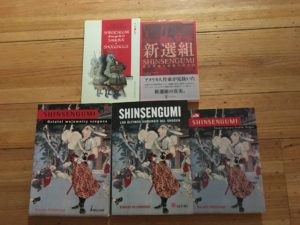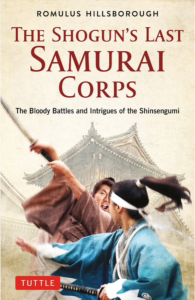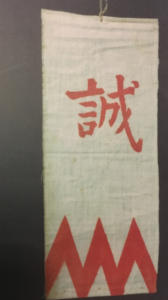With the recent Spanish translation, my Shinsengumi has now been published in six foreign languages, including Japanese.
Japanese (2007), Polish (2007), Romanian (2007), Indonesian (2009), Czech (2011; not included in photo), Spanish (2019)




Not to be confused with the Shinsengumi book I’m currently working on, this reprinting is scheduled for release September 2020. (I don’t anticipate finishing the next one for at least a couple more years.)
To go along with the revised title and new cover design, I have written a new Introduction, which features the following information not included in the first printing:

I’ve completed Part 2 of what I think will be four parts of the next Shinsengumi book, which I began writing about two and a half years ago. In August 2017, about a month into this project, I thought that, ““without stumbles, confusion, unexpected (i.e., new) discoveries, misunderstandings . . . ,“ I might finish within a couple years. But the deeper I got into it, the deeper I’ve delved. It’s a time-consuming occupation. I hope to finish within the next two or three years.
Thanks to all of my readers for their support.


“The men of the Shinsengumi . . . have insight . . . and high purpose,” said a supervisor of the Mimawarigumi (“Kyoto Patrol Corps”), a Bakufu security force that briefly rivaled the Shinsengumi. Initially the Shinsengumi “felt contempt” for their rivals, according to a former Mimawarigumi corpsmen.
All I will add here is that I am progressing slowly but very surely with this book.

Matsudaira Katamori, daimyo of Aizu, was officially appointed by the Bakufu as protector of Kyoto (Kyoto shugoshoku) in the early fall of 1862 at age twenty-seven. During the following six years that he held this high post, he had the dubious responsibility of protecting the Emperor, whom he revered, and the Imperial Capital, not only from the “foreign barbarians” who had been threatening the country since Perry’s first arrival nearly a decade past, but also from the anti-Bakufu “Imperial Loyalists” who were intent on “expelling the barbarians.” For the latter purpose he employed the service of the Shinsengumi, who were no less determined to drive out the foreigners and devoted to “Imperial Loyalism” than the rebels they hunted and killed.
[This photo of Matsudaira Katamori is used in Samurai Assassins, courtesy of the National Diet Library, Japan. Matsudaira Katamori is also featured in Shinsengumi: The Shogun’s Last Samurai Corps.]